Related Topics
Colonial Philadelphia (Pre- 1776)
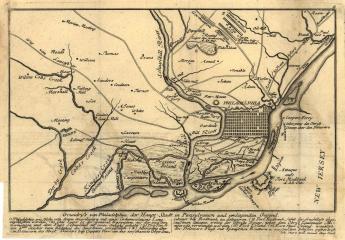 It's surprising to most Americans to learn the American Revolution was not the beginning, but almost half-way through the European settlement. And before the Revolution, there were thousands of years of settlement by non-European tribes. We know more about non-European settlers than we did fifty years ago, but records are still very poor or non-existent, and not likely to catch up very rapidly. History will begin in 1492 for a very long time. Long before that, it isn't history, it's anthropology.
It's surprising to most Americans to learn the American Revolution was not the beginning, but almost half-way through the European settlement. And before the Revolution, there were thousands of years of settlement by non-European tribes. We know more about non-European settlers than we did fifty years ago, but records are still very poor or non-existent, and not likely to catch up very rapidly. History will begin in 1492 for a very long time. Long before that, it isn't history, it's anthropology.
Historical Motor Excursion North of Philadelphia
The narrow waist of New Jersey was the upper border of William Penn's vast land holdings, and the outer edge of Quaker influence. In 1776-77, Lord Howe made this strip the main highway of his attempt to subjugate the Colonies.
Montgomery and Bucks Counties
The Philadelphia metropolitan region has five Pennsylvania counties, four New Jersey counties, one northern county in the state of Delaware. Here are the four Pennsylvania suburban ones.
Houses of the Penn Family
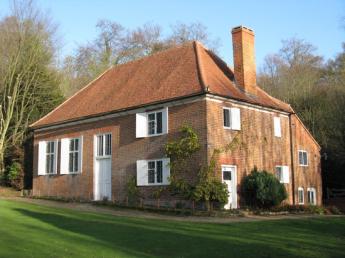
|
| Jordan Meetinghouse |
The name Penn seems to be derived from the Welsh name for hill; hills are abundant in Wales. There is a reason to suppose the family was of royal descent. William's birthplace is now disputed, possibly in London near the Tower, possibly in Ireland at Sharry Estate, possibly the Church of All Hallows, Barking, England. Much better known and much-visited is Jordans, the place where he is buried in the simple buying ground of the Jordans Meeting House in Buckinghamshire, on a by-road running between Chalfont St. Peter and Beaconsfield. The present grave markers were added later since early Friends generally declined to have their names on tombstones. He lived most of his life and actually died in the family estate in Berkshire called Ruscombe where he had usually attended Friends Meeting in nearby Reading. At the time of his death, his fortunes were much reduced, having been betrayed by his steward Ford, and imprisoned for nine months.
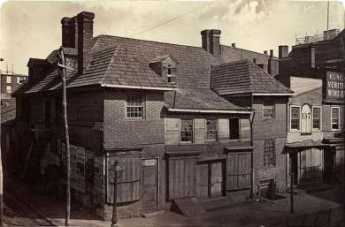
|
| Slate Roof House |
When he lived in Philadelphia, William lived in the "Slate Roof House" on Second, between Chestnut and Walnut (a small park commemorates the building lot), and the Letitia Street House. His plans originally were to build a manor house where the Art Museum stands today, on Faire Mount, but somehow he changed his mind and moved to Pennsbury on the Delaware River near Trenton. This manor also did not survive, but its careful restoration is now well worth a visit.
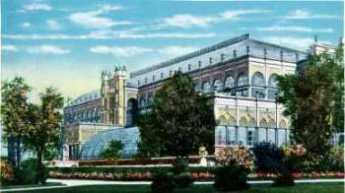
|
| Horticultural Hall |
William Penn had thirteen children, a circumstance adding much difficulty for genealogists. John Penn, the nephew of William's son Thomas, was the grandson who acted as Proprietary Agent and Governor prior to the American Revolution, although Thomas remained in London as a close friend of the King, and exercised firm control of the policies of the Proprietorship. John built a fine mansion on the Schuylkill called Lansdowne at the site of what was to become Horticultural Hall in the 1876 Centennial. About all that can now be visited is the glen on the estate, over which a bridge is still usable. It was here that he was apprehended by Revolutionaries, and taken to house arrest in New Jersey.
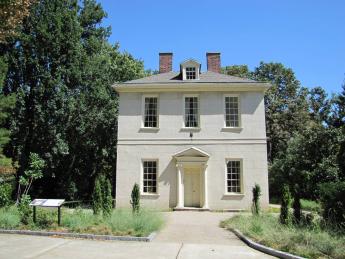
|
| Solitude House |
Lansdowne burned in the early 19th Century and pictures of it are hard to find. A smaller house of John Penn's, called Solitude, still stands near what is now the Zoo. John was arrested by rebel troops while living at Lansdowne and held prisoner at another house confusingly called Solitude, on the grounds of what became Union Forge, later the Union Forge Ironworks, subsequently the Taylor Iron and Steel Company. All of this is located in High Bridge, New Jersey, where subsequently five generations of the Taylor family lived until 1938. The Union Forge Heritage Association/Solitude House Museum welcomes visitors.
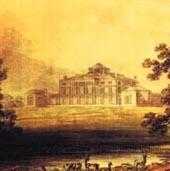
|
| Stoke Mansion |
A different John Penn, who called himself John Penn of Stoke, inherited a much larger portion of the final payment for the Proprietorship lands in Pennsylvania in 1789 because he was the son rather than the nephew of Thomas Penn. Thomas had purchased the historic Manor House in Stoke Poges in England. Although this splendid palace dated back to 1066 and Elizabeth I had visited it, it was by 1790 so dilapidated that John Penn demolished three-quarters of it. In its place, he built a proper palace, called Stoke Park. The family fortunes seem to have declined after that, perhaps because of the extravagance of an estate he could not afford.
Originally published: Tuesday, October 17, 2006; most-recently modified: Thursday, May 02, 2019
| Posted by: Gil Gilbert | Jan 28, 2018 11:58 PM |
| Posted by: Gil Gilbert | Jan 28, 2018 7:53 PM |
Wonderful blog!
Union Forge Heritage Association
http://www.highbridge.org/about/union_forge_heritage.html
| Posted by: William Honachefsky Jr-Trustee | Oct 30, 2007 2:36 PM |